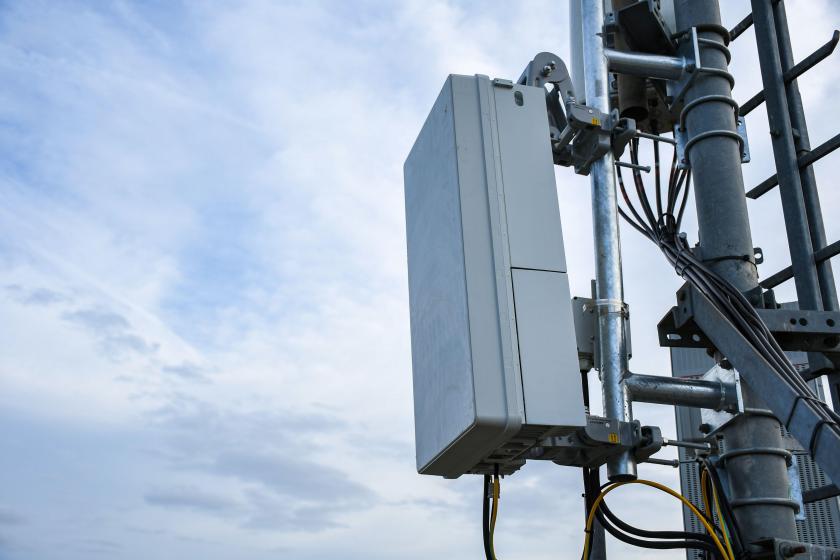

- Details
- Published on 15 May 2024
(Credit: Tadej Pibernik / Alamy Stock Photo)
Pending 6GHz spectrum availability, faster speeds, and private wireless access use drive FWA forward.
Fixed wireless access has lived in the shadow of fiber in the nationwide broadband breakout. But now, higher speed, expanded use cases, and the anticipated availability of 6GHz spectrum have the option of commanding a broader role, which includes corporate networking.
"Fixed Wireless Access has proven that it can provide connectivity both in rural and underserved markets while also competing head-to-head with fixed broadband technologies in urban and suburban markets," said Jeff Heynen, Vice President and analyst with the Dell’Oro Group . “Beyond residential connectivity, enterprises are relying more heavily on FWA-enabled routers and gateways to connect branch offices, vehicles, and kiosks as part of their own private wireless initiatives,” added Heynen.
Beyond residential use
Fixed Wireless Access (FWA) has surged in recent years to support both residential and enterprise connectivity due to its ease of deployment along with the more widespread availability of 4G LTE and 5G Sub-6GHz networks, which offer increased throughput and reliability, comparable in many cases to more traditional fixed broadband technologies.
The most important trend, according to one analyst, has been the increase in millimeter wave deployments at Verizon and USCellular. “Both are planning to use mmWave in urban areas where subscribers are close to small cells. mmWave can deliver speeds beyond 1Gbps and is averaging speeds of anywhere from 300-1.5Gbps, depending on the distance to the small cell,'" explained Heynen.
T-Mobile is also discussing using mmWave to complement its mid-band spectrum-based FWA offerings. "That market and technology are going to see interesting developments and use cases throughout the year and into next year," predicted Heynen.
When used for 5G signals, millimeter waves (mmWaves) are produced using low-power small cells. These small cells are arranged as a network in clusters to provide coverage in an area. This band of frequencies provides greater bandwidth, making it ideal for network operators to provide faster service to bandwidth-intensive applications.
6GHz for FWA
Another watershed development in the emergence of FWA would be the opening of spectrum in the 6GHz band for the use of unlicensed FWA. However, before this work-in-progress becomes a reality, companies that must be found to operate advanced frequency control (AFC) systems to guard against interference must complete testing tasks and receive approval from the FCC.
At last check, the agency cleared seven vendors to test their AFCs. They include:
- Broadcom
- Comsearch
- Federated Wireless
- Qualcomm
- Sony
- Wi-Fi Alliance
- Wireless Broadband Alliance
At least six more entities have received conditional FCC approval.
The North American market remains the most dynamic in terms of deployed FWA technology options, with CBRS and other sub-6GHz options growing alongside 5G NR and 60 GHz options.
5G FWA technology is seen as an accelerator, and its use is expected to represent 45% of the total FWA subscription base by 2029, reaching 118 million at a CAGR of 35%, according to a report from ABI Research.
FWA Benefits and Challenges
The top benefits of FWA are that it can be deployed without cable in the ground or hung on poles and requires only limited permitting. And with access to additional spectrum, it's easier to find space for wireless communications. As a result, FWA is quicker to deploy, cheaper, and more flexible than fiber, especially in mountainous and wooded terrain.
The biggest challenge remaining is that FWA requires a clear line of sight between the point of signal original and the points of the requested termination. A longstanding shortcoming of FWA is its lower than fiber data speeds supported in resulting services. However, the ability to use additional spectrum has some service providers talking speeds of up to 1 Gigabit/sec.
Challenging terrain deployments can be made more accurate and quicker using Light Detection and Ranging (LiDAR), which uses light and sensors to help survey and mapping. The tech creates accurate maps and digital elevation models for geographic information systems for commercial surveying and mapping applications.
A final thought on FWA
The fiber first and foremost focus that came with the BEAD program didn’t seem to leave room in the broadband breakout for other access options. Now, years later, the realities of closing the digital divide and the near-term needs of users have created plenty of room for FWA.
In fact, The FWA equipment spend is expected to exceed $40 billion over the next five years, according to Dell’Oro Group. Spending on 4G and 5G-enabled enterprise routers and gateways is expected to reach $4 billion by 2027.

